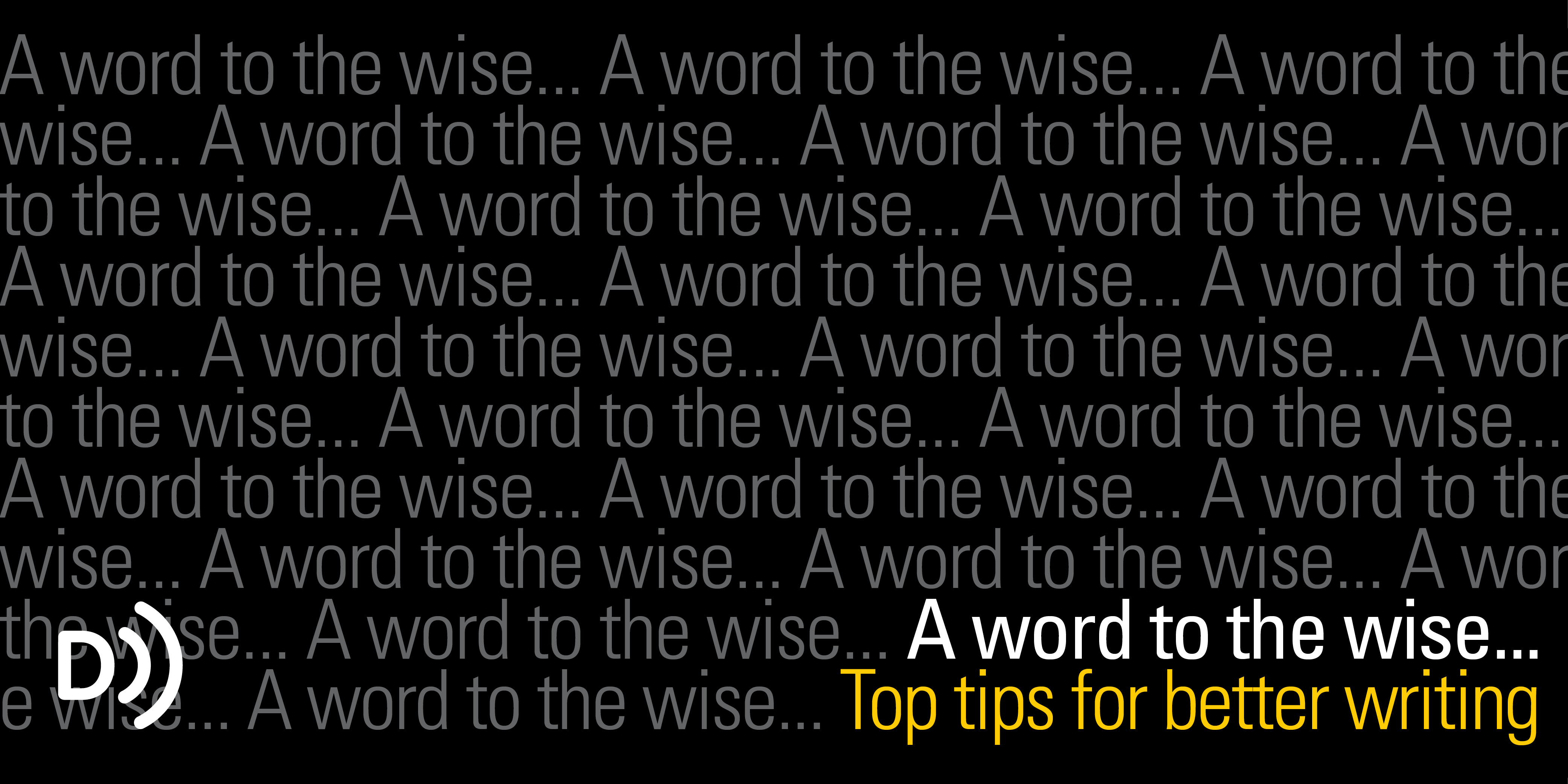Want to have a way with words? Here are our top tips for writing that makes an impact.
1. Know who you’re talking to
Every audience is different – with different needs, characteristics and drivers.
That’s why understanding your audience is so important for good communication. Once you know more about your audience, you can then craft your writing to make sure it’s relatable, pitched at the right level, and uses language your audience can connect with.
2. Remember your ABCs
The ‘ABC’ mnemonic (A for Accuracy, B for Brevity, C for Clarity) is a simple checklist that can help keep your writing on track. Ask yourself: have I got all the facts right? Have I said what I need to say in as few words as possible? Could I say this more clearly? By keeping these golden rules in mind, you’re much more likely to produce writing that successfully gets the right message to the right audience.
3. Keep it simple
Just because a topic is complex doesn’t mean the writing has to be. As we’ve already noted, good writing is about making things clearer for your reader. So keep sentences short and to the point. If sentences are long, the meaning is often lost. And wherever possible, avoid choosing a big word if it won’t add anything to what you’re saying, and there’s a simpler word that can do the job just as well.
4. Ban the boring
No one wants to read something that’s boring. Ever. And that goes for traditionally ‘dry’ documents like tender applications and proposals.
So try and think of that poor person wading through hundreds of turgid, dense applications all promising ‘innovative solutions’ – and write for them. Be the bright spark in their day by using fresh, simple and interesting language. Highlight explicitly what’s different about what you do and importantly, why that matters. By emphasising the benefits and steering clear of empty corporate-speak, you can write an application that stands out from the rest.
5. Show, don’t tell
This classic piece of writing advice still holds true, and can really help with writing that creates an impact. Try to paint the picture for your readers by using concrete details that demonstrate your point. For example, if you were talking about how your organisation has benefited participants through a particular service, you could say ‘Sean now catches the bus by himself to the shops and does his own shopping’, rather than ‘Sean is now very independent’. By bringing life to your story through details, people can visualise what you’re talking about and are much more likely to be engaged.
Need help telling your story? Contact us or send a message to info@disruptivemedia.com.au
What are some of your top writing tips? Let us know your thoughts.



